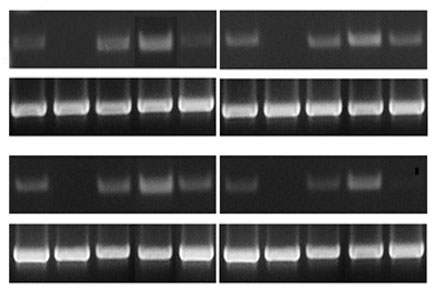Abstract
We investigated mRNA expression of heat shock protein 90 (HSP90) and superoxide dismutase (SOD) in gill tissues, and osmolality and hydrogen peroxide (H2O2) concentration in the haemolymph of Pacific oysters, Crassostrea gigas, exposed to 30ºC and 35 psu (thermal stress) and 20ºC and 52.5 psu (osmotic stress). HSP90 and SOD mRNA expression and H2O2 concentration were highest at 6 h, and osmolality was highest at 24 h during thermal stress experiments at 30ºC. HSP90 mRNA expression and H2O2 concentration was highest at six days, SOD mRNA expression was highest at nine days, and osmolality maximal at three days in C. gigas exposed to osmotic stress at 52.5 psu. These results indicate that high water temperature and high salinity induce changes in osmolality and H2O2 concentration, and that SOD and HSP90 play important roles in the effects of temperature and salinity on the gills of oysters. We suggest that the pattern of HSP90 mRNA expression is related to its function as a molecular chaperone contributing to the folding and maintenance of structural integrity, and that SOD mRNA was highly expressed as a defense against reactive oxygen species.

